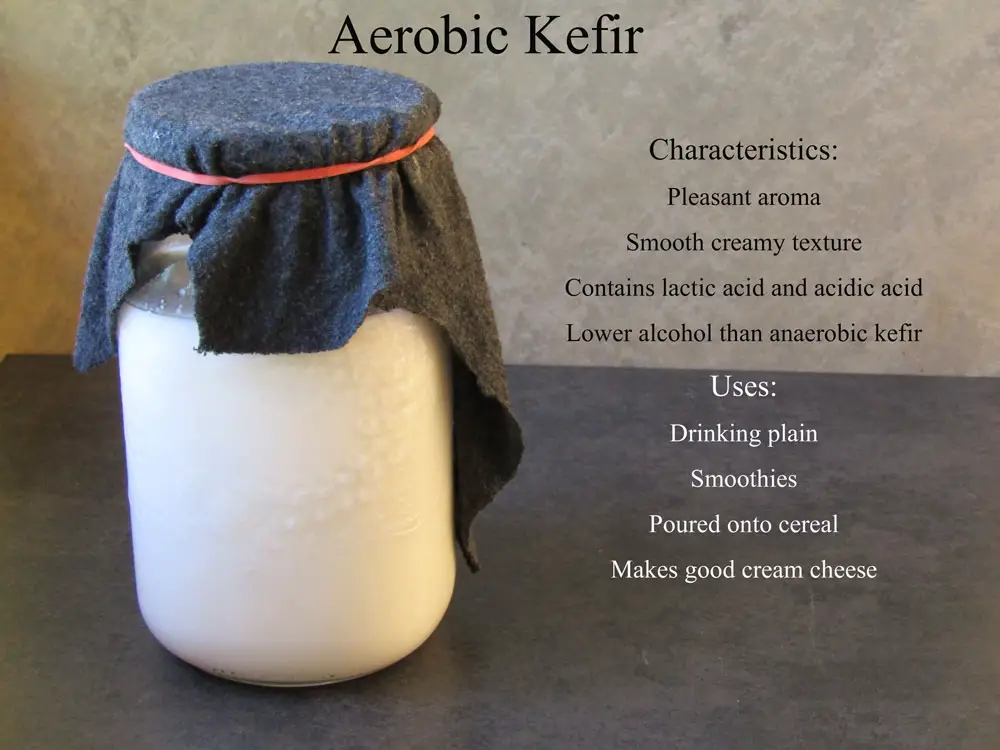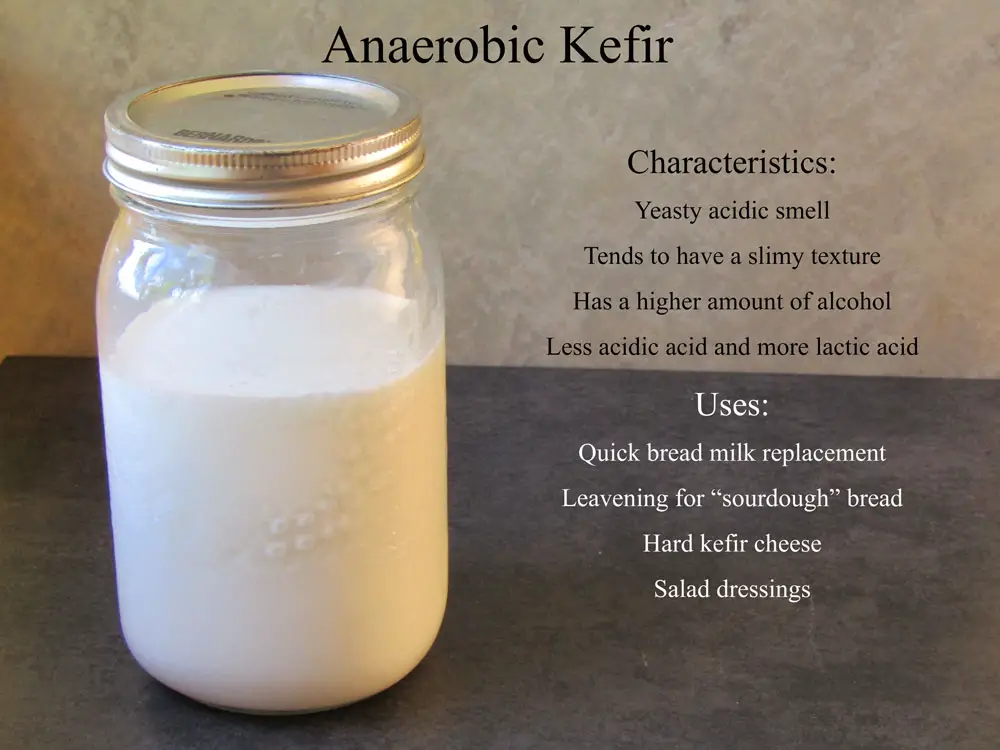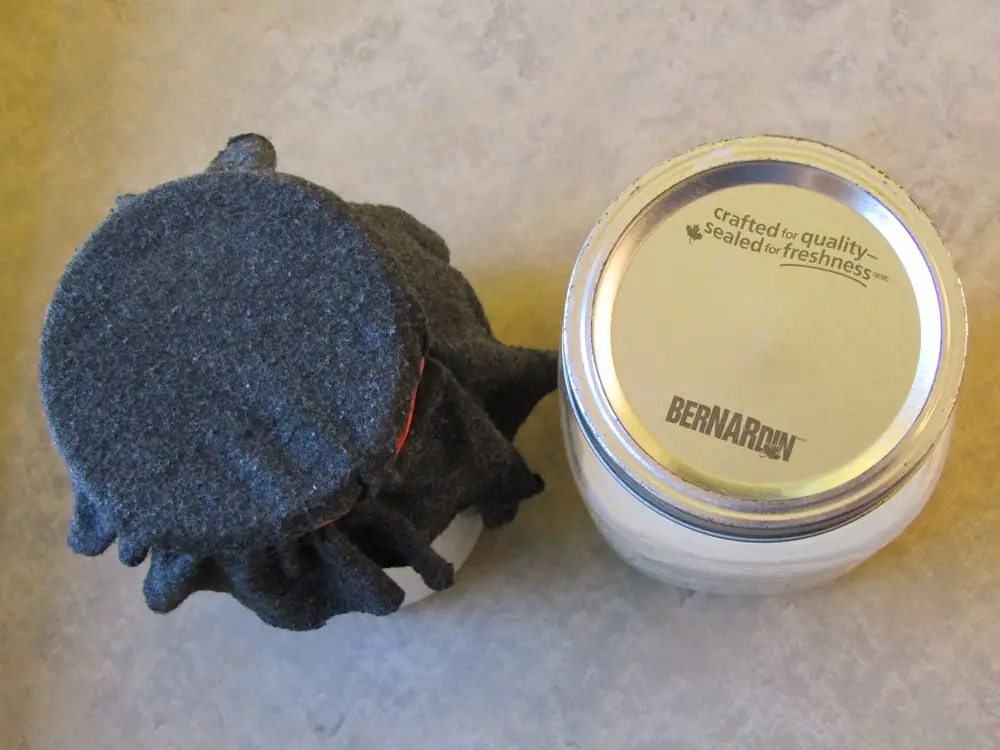This post contains affiliate links.
Milk kefir is regarded as one of the best probiotic foods you could have. The reason for this is the wide variety of bacteria and yeast species which live in and around the kefir grains.
Kefir grains have acetic acid bacteria(AAB) and lactic acid bacteria(LAB) present. AAB requires oxygen to grow but LAB does not. Since both types of bacteria will acidify the milk causing it to thicken either way will produce kefir but the resulting kefir will vary in flavor and texture.
There are a few important things to understand before you decide which method you are going to use to ferment you kefir.
How much alcohol you want in your kefir
For more information about alcohol formation in kefir read “Does Milk kefir have alcohol?” but in short an anaerobic fermentation will increase the amount of alcohol in the kefir because of three main reasons.
- The action of the yeasts especially Saccharomyces cerevisiae (The yeast used in the wine industry) produces a high amount of alcohol in an anaerobic environment.
- The growth of the acetobacter is limited.
- No alcohol is dissipated into the air due to the lid
Yeasts grow the best in aerobic (with oxygen) conditions but can change their respiration to continue to grow in anaerobic (without oxygen) conditions. When they do that they are not as efficient at consuming the available sugars which produces more alcohol and carbon dioxide.
Fermenting kefir in an aerobic environment reduces the amount of alcohol which is produced by the yeasts and increases the growth of acetobacter. Acetobacter converts the alcohol into acetic acid otherwise known as vinegar.
The rate alcohol evaporates is dependent on three main conditions. Temperature, concentration and surface area. By putting a lid on the kefir no alcohol can escape so it will have a higher alcohol content.
What you want your kefir to taste like
Promoting the growth of different cultures in your kefir grains alters the flavor of the kefir.
A fermentation which is dominated by yeasts will give it a yeasty flavor
Of the three main types of cultures the yeast has the most identifiable flavor. The flavor of sourdough bread or freshly baked leavened bread. Which in bread is great but you may not like it so much in kefir.
One which is dominated by lactic acid bacteria has a sour flavor and make kefir grains slimy
Lactic acid bacteria produce the sour flavor in the kefir which many people like but it also produces the biofilm on the kefir grains which protects the grains from pathogenic bacteria and is thought to be part of the building blocks of the kefir grains. A certain amount of biofilm is good but too much gives the kefir a sticky slimy texture which may not be pleasurable to drink.
Lastly one dominated by acidic acid producing bacteria will have a vinegar flavor
Acebacter is the main acidic acid and is the bane of wine making. Wineries go thorough great lengths to keep Acebacter out of their wine culture but in kefir it is a natural symbiotic partner of the yeasts in the grain. It imparts the tangy flavor in the kefir which makes it great for a morning milk substitute although too much of it makes it unpleasant to drink.
Each of these three main cultures are normally found in kefir grains and have different optimal growing conditions.
Culturing your kefir without oxygen will allow the yeasts and lactic acid bacteria to grow but will slow down or stop the growth of acebacter and other acidic acid forming bacteria. This is good if you want a higher than normal alcohol content and more biofilm production.
This is because the lactic acid Lb. kefirin reproduces well in an anaerobic environment which is one of the main producers of the slimy biofilm which coats your kefir grains.
What to cover a kefir fermentation with
For aerobic fermentaiton
If you have just started making kefir then I suggest you make it with a breathable lid. There are many choices which I have seen floating around the internet. Everything from coffee filters to special kefir making lids on special bottles. My suggestion is to tear up an old cotton T-shirt into small squares and find an elastic band. Just as long as the cloth does not have any holes large enough for insects or dust to get into the container it will work fine.
When you use mason jars for making your kefir one T-shirt will make at least ten jar covers which allows you to always have a clean one on hand when you go to move your kefir along.
For anaerobic fermentation
If you are using mason jars then anaerobic fermetation can be achieved simply by using a canning sealer lid or a plastic jar lid which does not allow the free flow of air. These lids should be burped every once in a while to prevent the buildup of carbon dioxide gas.
Another option is to use mason jar air locks. These are essentially a plastic lid with a wine air lock in the middle. They can cost up to $16.00 but are worry free so if it is worth it to you they are available.
Another option is to use any glass bottle with an opening large enough to place a large wine stopper and air lock in it. Wine air locks are cheaper and easier to find, will last a long time and can be cleaned easily.
Once you are experienced at making kefir then you need to determine what you are going to use the kefir for before you make it.
Characteristics of kefir made with oxygen

Kefir made with a permeable lid has all three main culture types active in it. The sugar in the milk is consumed by the yeasts and the lactic acid bacteria in a competitive way. This keeps the yeasts and lactic acid bacteria healthy but not allowing the other to dominate, making for a kefir which is not too yeasty or sour.
The acidic acid bacteria acebacter has access to oxygen so it produces acidic acid and removes some of the alcohol from the kefir making for a kefir which has some tanginess to it.
This type of kefir is great for the morning smoothie, to pour over cereal or to just drink as a milk replacement. It is low in lactose and has a lower alcohol content. This is the type of kefir the grocery store tries to produce with only a few bacterial cultures.
Characteristics of kefir made without oxygen

Kefir made in an anaerobic environment is high in lactic acid and may have more alcohol because this culturing method allows the growth of lactic acid bacteria and the yeasts but eleminates acebacter. These produce carbon dioxide as a by product and therefore must be treated differently than aerobically fermented kefir.
The texture of kefir made this way has a stringy sticky texture. This is because the lactic acid bacteria which are anaerobic in nature have the edge on the yeasts which can survive in this environment but are less efficient. The lactic acid bacteria produce a high amount of biofilm which surrounds the kefir grain protecting it from pathogenic bacteria.
Kefir which is made this way is great for salad dressings, quick bread baking as well as can be used as sourdough starter due to the acidic nature and presents of the yeasts.
Kefir cream cheese made with anaerobically fermented kefir makes a really creamy zesty cream cheese and if it is pressed can make a great hard kefir cheese which if it is stored in a refrigerator will last a long time.
Which is the right way?
When it comes to making kefir there is no right or wrong way. There is only the way the maker likes it. Fermentation is an active process which is full of experimentation and learning. If you are not sure which way you like your kefir try it both ways. Compare how they taste and make your own decision.
You can even make some of both for different reasons. Make some for baking and some for drinking. Try making some into ice cream or fruit rollups. The possibilities are endless and the method is open for you to decide which you prefer.

